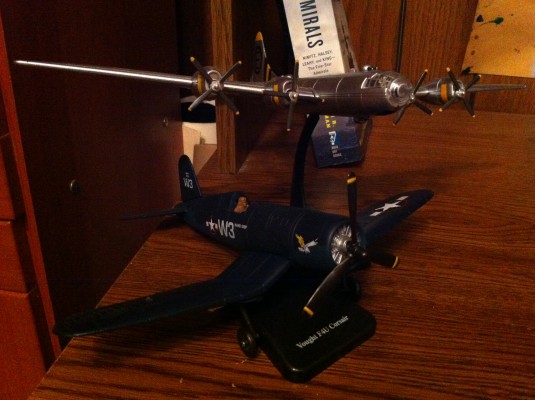A Villager’s Tale: Through My Grandfather’s Eyes During WWII
November 21, 2013

November is Aviation History Month. Throughout history, airplanes have either brought death, life or commercial practicalities to people. For instance, they brought devastation and horror to Nagasaki and Hiroshima whereas they brought hope through the Berlin Airlift. Here is a story in which airplanes brought fear, victory and life to my grandfather’s village, neighboring villages and China during World War II.
“The Japanese planes were everywhere,” my grandfather said. “They don’t fly by every single day, but they did so often and when they were overhead, you can always hear their engines. It was like thunder clapping.”
My grandfather was only four years old when the Second Sino-Japanese War, fought by the Empire of Japan and the Republic of China, began in 1937. The Second Sino-Japanese War would later be enveloped into a greater crisis: World War II.
Japanese Mitsubishi transport and bomber aircrafts terrorized his hometown Qibao, a village in southern China. Japanese soldiers entered his village and nearby villages after first successfully conquering larger regions like Manchuria and Nanking in a domino-like pattern. One by one, Chinese cities, towns and villages fell into Japanese hands.
Food became scarce and fear became everyday neighbors to starving citizens.
“There were people who starved and died in my village,” he said. “Even some of Hong Kong’s rich businessmen starved to death. Yes, they had money, but there was not enough rice. What are you going to do? Fly away?”
My grandfather and other villagers relied on the following three staples for sustenance for the remainder of the war: rice to make congee, which is a rice porridge, potatoes and cauliflowers. Dry leaves and grass were used to cook food. Scarcity of rice would oftentimes lead to a porridge that had a heavier ratio of water to the amount of rice pellets. If he was still hungry, he ate grass, flowers and fertilizers normally used for plants such as the burnt bits of fried peanuts and if he was lucky, fruits.
To this day, my grandfather still eats these three staples—always boiled in some water and without salt.
“[Citizens] were helpless,” he said. “Some of us thought up of silly ways to ‘defeat’ the Japanese planes. I forgot what the poem was called, but some of us would recite a Chinese poem in hopes that the planes that flew by would explode. It was silly. Our words cannot even be heard under all that noise.”
Then there was the Flying Tigers.
“The Flying Tigers!” my grandfather said with a smile. “The famous Flying Tigers!”
The First American Volunteer Group (AVG), nicknamed the Flying Tigers, was a fighter group comprised of American volunteer pilots of the Chinese Air Force commanded by United States Lieutenant General Claire Lee Chennault during both wars. The Flying Tigers’ mission was to safeguard China and Burma from Japanese offenses.
The Curtiss P-40 Warhawk/Tomahawk/Kittyhawk fighters were the Tigers’ primary choices of aircrafts during their raids. Their shark-faced nose art are distinctive and alongside pinup girls, one of the most recognizable nose artworks on an American WWII aircraft.
“[Tigers] had successful air raids,” my grandfather said. “[Villagers] would talk about them a lot during the war and after the war.”
Although my grandfather spoke fondly of the Tigers, he never saw P-40s in Qibao during the wars. But whenever Mitsubishis flew overhead, he would sometimes think of the P-40s.
“One time, a Japanese plane crashed into a rice paddy in Kuomintang [Chinese Nationalist Party] territory,” he said. “The pilot was wounded. If he had flew the plane a little bit into Japanese territory, he would not have been captured. The Kuomintang tried to take him as prisoner but he committed suicide by gun. The Kuomintang covered the plane with blankets and towed it away.”
Lei Wei Lun, a villager of a neighboring village, became a mole in a nearby Japanese station.
“At the end, he sneaked back to Kuomintang territory, took a small 200-manned army and returned to the station, capturing and bringing some Japanese soldiers back to Kuomintang territory,” my grandfather said.
Victory was short-lived as the Japanese, after learning about the treason, came to Qibao and burned down its stores as revenge.
“It was bad,” my grandfather said. “There was no good when the Japanese came. People died. People starved. Places burned. It was bad.









